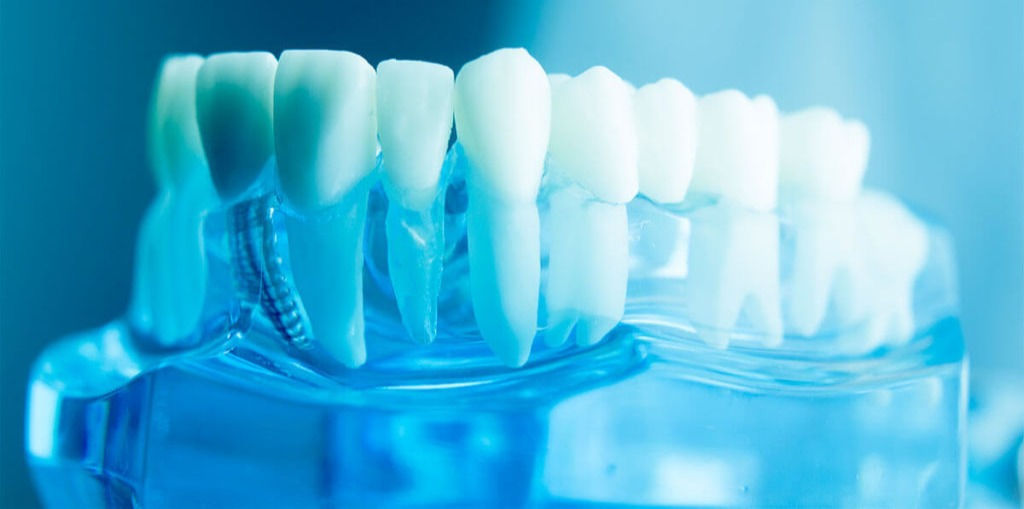
ZeOs Ağız ve Diş Sağlığı Polikliniği
Yaprak Porselen
Yaprak Porselen & Porselen Lamina ( Laminate Veneer) Nedir?
Yaprak porselenler dişlerin ön yüzeylerini hiç aşındırmadan ya da 0.3-0.7 mm aşındırarak ortalama 0,7 mm incelikte hazırlanmaktadır. Hassas yapıştırma tekniği ile dişlerin renk, form ve pozisyonlarının değiştirilmesi amacı ile kullanılan porselen uygulamasıdır.
Kozmetik ve estetik diş hekimliğinin ilerlemesi ve gelişmesiyle birlikte porselen lamina gülüş tasarımında yoğun olarak kullanılmaya başlanmıştır.
Porselen lamina uygulamalarında kullanılan cam seramikler (IPS E-max) ışık geçirgenliği doğal dişe en yakın malzeme olduğu için zirkonyum ya da diğer porselen kaplamalara oranla çok daha estetik ve doğal bir görünüme sahiptir.

Porselen Lamine (yaprak porselen) Hangi Durumlarda Yapılır?
-
Ortodontik tedaviyi gerektirmeyecek kadar çapraşıkların ve diş eğriliklerinin varlığı halinde,
-
Diastema olarak adlandırılan ön grup dişlerin arasında boşluk bulunduğu durumlarda beyazlatmanın işe yaramadığı lekelenmelerde,
-
Özellikle florazis, yaşlanmaya bağlı olarak diş renginin koyulaştığı durumlarda,
-
Endodontik tedavi sonrası meydana gelen renklenmeler, antibiyotik lekelenmesi, hipokalsifikasiyon, tetrasiklin lekelenmelerinde,
-
Yüzeylerinde uyumu bozulmuş dolgularda, aşınmış dişlerde,
-
Özellikle yaşa bağlı olarak, zamanla sararmış ve madde kaybına uğrayarak boyutu küçülmüş dişlerden memnun olmayıp, genç bir görünüme sahip olmak istenmesi halinde,
-
Dişlerde kırık, çürük gibi nedenlerle oluşan madde kayıplarının varlığı halinde,
-
Estetik diş tasarımı yaptırmak ve gülüşünü yeniden dizayn ettirmek isteyen hastalarda uygulanabilir.
Yaprak porselen yapılabilmesi için hastanın 18 yaşından büyük olması gerekmektedir.

Porselen Lamine nasıl yapılır?
İlk seans hastanın ağız içi ve yüz fotoğrafları çekilir. İlk olarak hastanın ağız ölçüsü alınarak dişlerin modelleri elde edilir. Bu modeller üzerinde hastanın problemleri detaylı bir şekilde belirlenip model üzerinde düzeltmeler yapılır. Hastanın beklentisi ve yüz formuna uyacak şekilde gülüş tasarımı yapılır. Hasta model üzerinde dişlerin bitmiş seklini görebilir.

Daha sonra bu model ağıza aktarılır ve hasta daha işleme başlamadan tedavi sonrası dişlerin bittikten sonra nasıl görüneceğini kendi ağzında deneyimleme şansı bulur. Düzeltilmesini istediği ya da beğenmediği kısım varsa bu aşamada belirlenerek düzeltilir ve tedavi sonrası hasta sürprizle karşılaşmamış olur. Hastadan onay alındıktan sonra tedaviye başlanır.

Bölgeyi uyuşturmadan ya da çok az uyuşturarak dişlerin sadece ön yüzeylerinden 0.3-0.7 mm aşındırılır. Hastadan ağız içi tarayıcılarıyla veya ölçü materyalleri kullanarak detaylı ölçü alınır. Yaprak porselen yapılana kadar ki sürede hastaya geçici yaprak porselenler yapıştırılır. 3 ila 5 gün süren laboratuvar işlemlerinden sonra hazırlanan yaprak porselenler ağızda prova yapılır.

Prova sırasında hastanın beklentileri doğrultusunda son düzenlemeler yapıldıktan sonra yaprak porselenler çok hassas yapıştırma prosedürü sonrasında dişlerin ön yüzeyine yapıştırılır. Yapıştırma aşaması tedavinin en önemli kısmıdır ve direkt tedavinin ömrünü etkiler bu yüzden kullanılan materyal ve hekimin tecrübesi çok önemlidir.
Prepless (dişler hiç kesilmeden) Yaprak Porselen Nedir?
Yaprak Porselen uygulamalarında diş dokusundan 0,3-0,7 mm inceltme tekniği kullanılarak kaplama yapılmaktadır. Uygun vakalarda ise diş yüzeylerine hiç dokunulmayan Prepless (dişler hiç kesilmeden) yaprak porselen uygulanabilmektedir. Bu yöntemde, hastaya özel hazırlanmış yaprak porselenler kimyasal olarak pürüzlendirildikten sonra özel yapıştırıcılar ile çok hassas yapıştırma prosedürü sonrasında dişlerin ön yüzeyine yapıştırılır.

Yaprak Porselenler Ne Kadar Sürede Yapılır?
Porselen Lamina ( Laminate Veneer) 'ler pembe estetik gerekmiyorsa 3-5 gün içinde tamamlanmaktadır. Pembe estetik gerekli olduğu durumlarda diş etinin iyileşmesi 2-3 hafta sürebilmektedir. Bu sürenin sonunda Porselen Lamina işlemine başlanır.
Porselen Lamine Kırılır Mı? Porselen Lamineler Dayanaklı Mıdır?
Porselen Lamineler ile Sert Şeyler Yiyebilir Miyim?
Yaprak porselenler sanılanın aksine çok dayanıklı malzemelerdir. Teknolojinin gelişmesine paralel olarak kullanılan materyallerinde güçlendirilmesiyle birlikte yaprak porselenlerin dayanıklılığı 10 yıl önceye kıyasla çok daha fazladır. Aynı zamanda yapıştırıcı ajanlar da çok güçlendirilmiştir. Yapıştırıldıktan sonra dişle bütünleştiği için kolay kolay kırılmaz. Kırılabilmesi için diş dokusunu kırabilecek şiddette bir kuvvete maruz kalması gerekmektedir. Günlük hayatta güvenle kullanabilirsiniz. Kabuklu yiyeceklerin kabuğunu dişlerinizle kırmadığınız sürece :)

Yaprak Porselenin Kullanım Ömrü Ne Kadardır?
Yaprak porselenin ömrü kullanılan materyale, hastanın oral hijyen işlemlerine dikkat edip etmemesi ve düzenli kontrollere gelip gelmemesine göre değişmektedir. Süreç içerisinde diş hekimlerini ziyaret etmeleri ve destekleyici uygulamalar görmeleri gerekmektedir. Her hastamız için kullanım ömrü farklı olmaktadır. Ancak ortalama olarak 10 seneden 20 seneye kadar bir ömrü olmaktadır.

Yaprak Porselenin Bakımı Nasıl Yapılmalıdır?
Yaprak porselen tedavisi sonrası ağız ve diş bakımına oldukça önem verilmesi gerekmektedir. Yemeklerden sonra dişlerin fırçalanması, ayrıca diş ipi ve dil temizleyicisi gibi ek bakım uygulamalarının yapılması gerekmektedir. Bunlara ek olarak 6 ayda bir profesyonel ağız bakımı uygulanmalıdır.

Yaprak Porselen Kullanımında Dikkat Edilmesi Gerekenler Nelerdir?
Yaprak porselen uygulamasının yapıldığı dişler ile sert kabuklu yiyeceklerin kabukları kırmaya çalışılmamalıdır. Hastalarımız, gece dişlerini sıktıklarını fark etmeleri durumunda, gece plağı kullanmalıdırlar. Ağız ve diş bakımına özen gösterilmelidir. Dişler düzenli olarak fırçalanmalı, diş ipi ve dil temizleyicisi kullanılmalıdır. 6 aylık periyotlar ile diş hekimi kontrolleri ihmal edilmemelidir. Kalem, toka veya iğne ısırma gibi bir alışkanlığı olan hastaların bu alışkanlıklarına son vermeleri gerekmektedir. Ağza darbe gelecek bir spor aktivitesiyle (boks, tekvando vb) uğraşanlar ağız koruyucu takmalıdır.

Yaprak Porselen Diş Fiyatları Ne Kadar?
Yaprak porselen fiyatlarının, diğer kaplama türlerine göre neden daha pahalı olduğu diş hekimlerine sıklıkla sorulur. Diş tedavilerinde fiyatı belirleyen en önemli etkenler diş hekiminin emeği, tedaviye harcadığı süre, diş tedavisi için kullanılan materyallerin fiyatlarıdır.

Porselen lamine diş yapımında kullanılan materyallerin özel olması, klinik ve laboratuvar işlemlerinin zor ve hassas olması, dişin hazırlanması, ölçü alınması ve uygulanmasının özel bir teknik bilgi ve uzmanlık gerektirmesi gibi nedenlerle, porselen lamine diş tedavi ücretleri nispeten daha yüksek olabilmektedir. Porselen Lamina ücretlerini öğrenmek için kliniğimizi arayabilirsiniz.
Porselen Laminelerin Avantajları Nelerdir?
Porselen Lamina Veneerler, diğer protez seçeneklerine göre daha estetik özelliklere sahiptir. Yaprak porselen çok ince bir tabaka halinde hazırlandığı için ışığı geçirmesi ve yansıtması doğal dişe yakındır. Bu nedenle doğal ve estetik görüntü verir.
Dişler minimal düzeyde ya da hiç aşındırılmadan yapılabildiği için dişlerin doğal yapısı bozulmaz, diş dokusu maksimum düzeyde korunmuş olur. 3-5 gün gibi çok kısa sürede tamamlanır.

Özel yapıştırıcılar ile yapıştırıldığı için yapıştırıldıktan sonra dişten ayrılması mümkün değildir. Aşındırılması mine düzeyinde ya da çok az dentini içine aldığı için çoğu hastada anesteziye gerek yoktur. Yapıştırıldıktan sonra rengi çay, kahve, sigara gibi dış etkenlerle değişmez, rengini korur.

